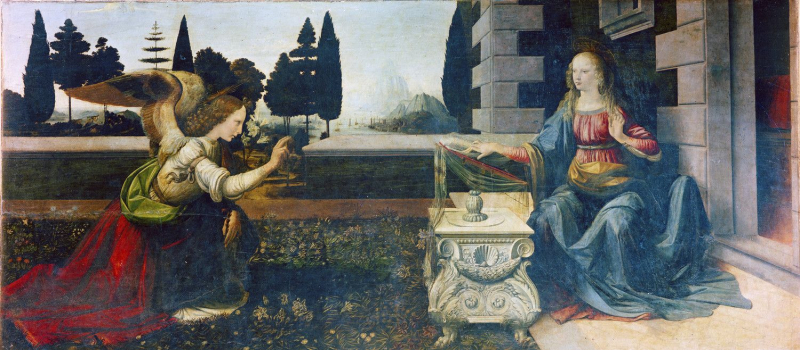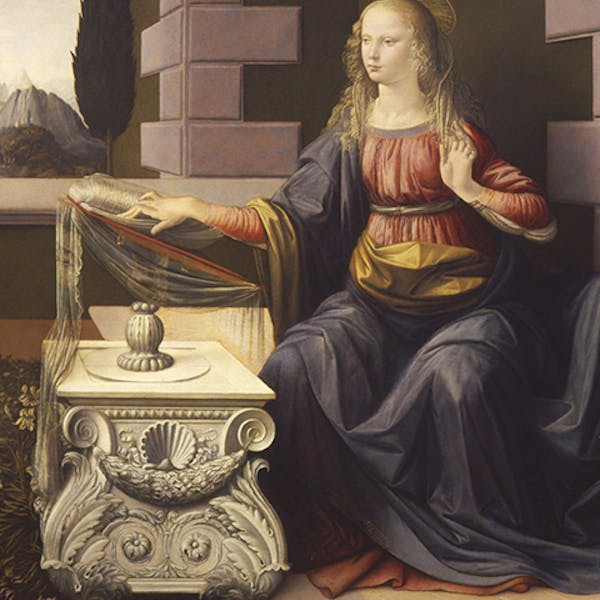The Annunciation
An artwork from the 1472–1475 era called Annunciation is an oil and tempura on wood composition. It is situated at the Uffizi gallery in Florence, Italy. Leonardo da Vinci is renowned for his intriguing depictions of biblical events in his paintings. There are several symbols and hidden meanings to be found in The Annunciation. It shows the angel Gabriel telling Mary that she would conceive miraculously and give birth to a baby who would be known as "the Son of God" and whose dominion would never end. This child's name would be Jesus. The annunciation was a common theme in contemporaneous paintings created in Christian nations like Italy, and it had appeared frequently in Florentine art, including multiple instances by the Early Renaissance artist Fra Angelico. The painting's early origins and the specifics of the commission are still unknown. Leonardo may have finished the Annunciation in his early twenties while continuing to work at Andrea del Verrocchio's workshop, whom he had previously served as an apprentice.
The picture contains several elements that have been employed to communicate the narrative. In this artwork, for instance, there is a lot of symmetry, balance, and heavenly powers, which represent holiness and divinity—qualities connected to the angels that visited Mary. The work has many characteristics with previous Leonardesque works like "Saint John the Baptist" and "Virgin of the Rocks".









